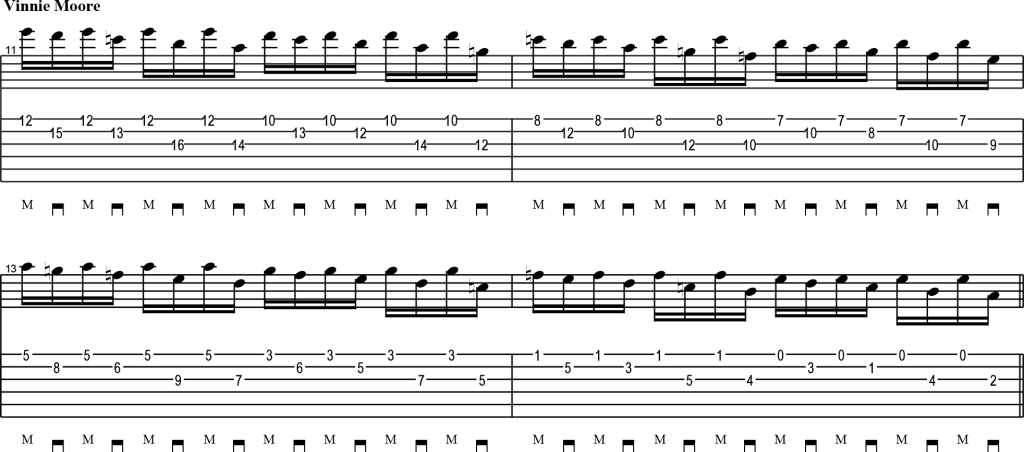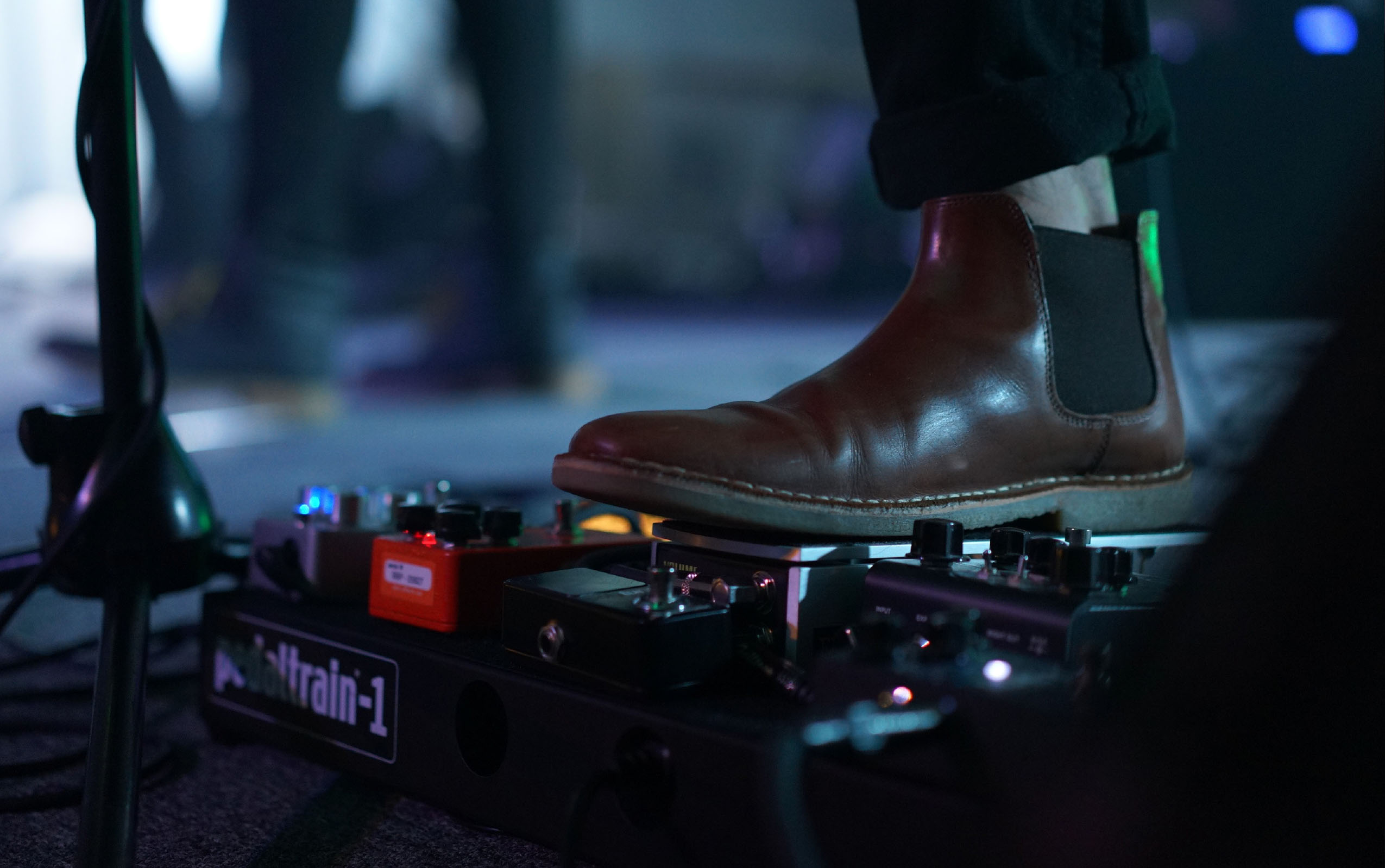I remember the first time I saw Eric Johnson play “Cliffs of Dover” on Austin City Limits on a VHS tape my roommate had. It was a life changing moment for me. The song was amazing and beautiful and the intro floored me. Eric was so articulate and moved seamlessly from one passage to the next. At the end of his free form intro solo he did something that made the biggest impression on me, an inverted pedal point line that he hybrid picked. Wow! I was blown away and had to know how he’d done that. I rewound that VHS tape over and over and watched that section until I could play it.
Next, I analyzed exactly what was going on in the lick. I noticed he played a series or line of notes, but kept returning to a single tone. As a matter of fact, he returned to that note, every other note in the line. I later discovered that the note he kept returning to is called a pedal and looked up a bit of background on the technique. I found that the origin of the melodic idea was from the pedals of an organ, and that the great J.S. Bach, among many others, had made use of the idea. I thought back to my own training in college and tried to find a way to incorporate the technique into my own playing without copying exactly what Eric Johnson had done. Now that I had a better understanding of the technique itself and its origins, I decided to give it a try.
First, here’s the Eric Johnson pedal:

Next, I took a simple one octave major scale and slowly pieced together my first pedal, using a hybrid picking technique as well. Initially in the key of A Major, I used this form of the scale:

I used the pedal technique at first descending with the scale, using the highest root note as my pedal, and hybrid picking the pedal (A-2nd string 10th fret), with the middle finger of my picking hand (M). Using down-strokes with my pick on all the other scale tones, and holding the pedal with the middle finger of my fretting hand:

I got the courage to try ascending even though I feared it could be twice as difficult, using the same techniques with my picking and fretting hands:

Getting the hybrid picking part and keeping the middle finger of my fretting hand on the pedal note was the most challenging thing initially about the lick. But, before I knew it I could play the lick reasonably well, in fact well enough to incorporate it into my typical soloing ideas, ascending and descending. It added a whole new dimension to my playing. It is a very useable melodic idea that breaks the monotony of scale and arpeggio lines, and typically grabs a listener’s attention.
Since that worked out pretty well, I tried to think of other applications. Reverting back again to my training in college I thought, would this work in an arpeggio? I thought of the simplest form of an arpeggio I knew at the time, you guessed it an A major arpeggio! I used the same methodical approach I had with the scale placing the pedal between each note of the arpeggio, just as I had done with the scale, ascending and descending. Using the middle finger of my picking hand for the pedal, and sustaining the pedal with the first finger of my fretting hand:

I began to see the technique used quite frequently and soon realized that I had but scratched the surface of the pedal point technique, and its various applications. One example in particular that piqued my interest was an extended pedal in A Minor by the virtuoso guitarist Vinnie Moore, who also used the hybrid picking technique:

Several years later the pedal point technique is still a part of my lick repertoire. I enjoy utilizing it in my own playing, but also teaching it to students. I know the technique will broaden their melodic and harmonic capabilities and add a new dimension to their playing and technique, just as it did for me. It can do the same for you. I encourage you to try the ideas illustrated here, but do some research and come up with your own ideas with the pedal technique. I’ve seen everything from the Major and Minor Scales to the Pentatonic Scales used in a pedaling approach. There are plenty of resources to draw from. So give it a go, you’ll be glad you did!


